Dixon tunable Polymer Soprano D whistle Review
(Review written January 2006)
- Preface
- I've heard about Tony Dixon's instruments for a number of years. They usually come up in messageboard discussions when someone asks about a cheap durable instrument. A lot of people swear by them, so I was glad to get my hands on one to give it a whirl.
- At a Glance
- Whistle Reviewed
- Dixon tunable Polymer Soprano D whistle
- Models Available
- Tony Dixon offers flutes and whistles in a wide variety of materials such as ABS, Polymer, Brass, and aluminum. High whistles can be had in keys E through C, and low whistles F through C.
- How Acquired
- recieved secondhand
- Construction
- Polymer body with ABS head
- Price at Time of Review (in US Dollars unless otherwise noted)
- £15.50 (about $27 USD)
- Available From
-
Tony Dixon Music
The Whistle Shop
House of Musical Traditions
Hobgoblin Music
Whistle and Durm
- Appearance
-

Here's a close-up of the mouthpiece, which is made of ABS plastic.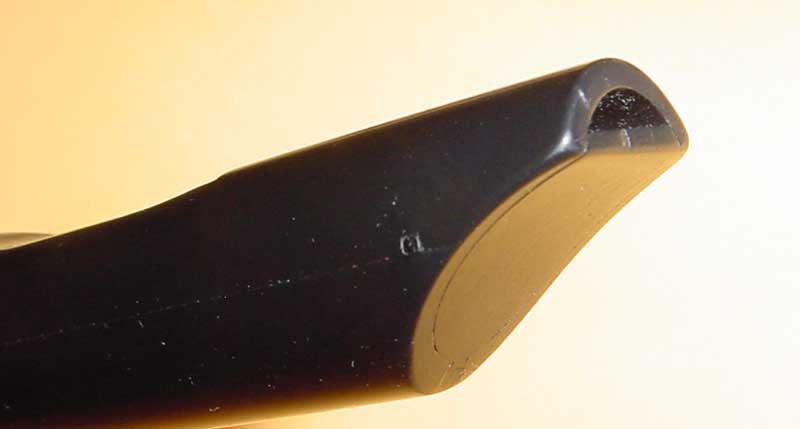
Here's another angle on the mouthpiece, showing the fipple area. As near as I can tell, the fipple is ABS plastic, too. As you can see, the beak of the whistle is a little stubby compared to mass-produced plastic-headed whistles, which is true of most high-end instruments I've reviewed (though not all)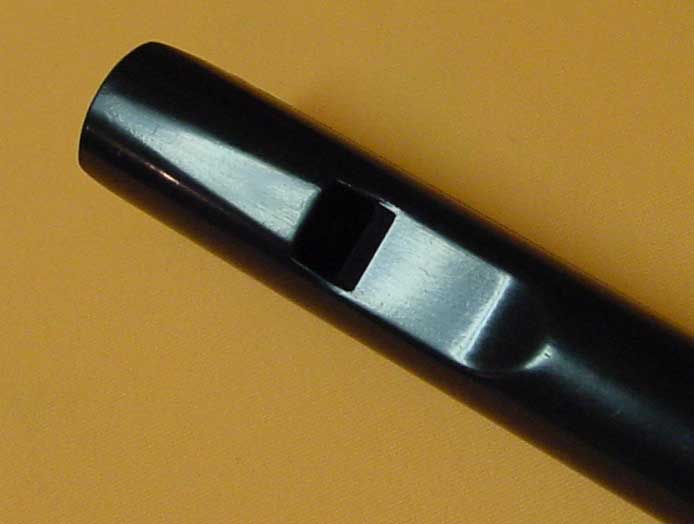
Dixon's have a neat semi-flattened top on their mouthpiece that I haven't seen on other whistles. You can see it here; it's the nearly-triangulary shiny area.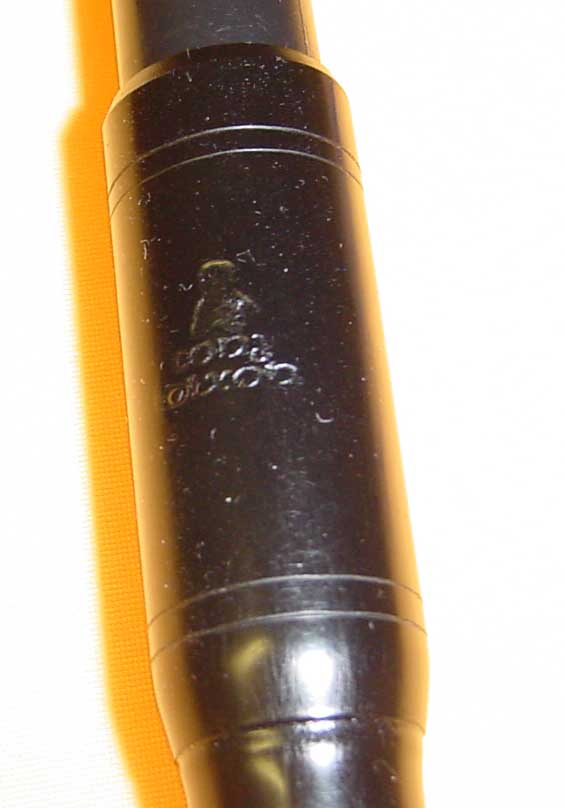
The tuning slide on this whistle is very much like the slide on the SZBE whistle I recently reviewed. The head piece inserts into the body piece, rather than the other way around.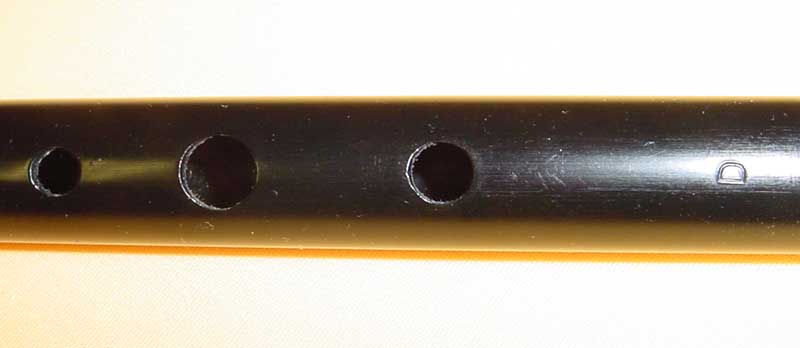
A shot at the end of the whistle, showing the last three holes.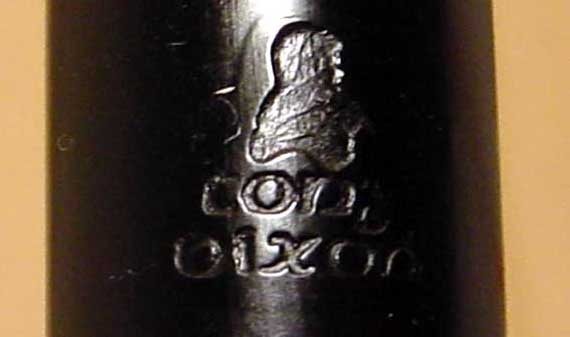
As it was stamped into the black tuning slide, it took me a number of shots before I got a picture of Tony's logo that was even this good. I really need to take some photography lessons or something. I wish I knew how to take better pictures of dark whistles like this.
- Playing Characteristics
-
Sound clips of the whistle:
Star of the County Down
Dusty WindowsillsTone: Pure with nearly zero chiff. You can induce some start-of-note chiff if you attack the notes a little aggressively. The second octave D is a bit chiffy when played with all fingers down, but not nearly as chiffy when the top hole is vented.
Volume: medium low. Perhaps a touch quieter than a Sweetone or a Generation. The second octave is easily twice as loud as the first. It was a challenge to get the first octave loud enough in the recording without too much clipping in the second octave (which occurs when the volume input goes into the red)
Responsiveness: Nimble. I was able to play as quickly as I cared to with this whistle.
Tuning: Unfortunately, this Dixon has some problems with intonation. The second octave is sharp compared to the first, by about 20 cents. I've spent about 3 weeks adjusting the tuning slide and trying different breathing techniques. Beyond looking at the tuner, I take the whistles I review to session, and this one definitely is off from everyone else when I'm in the second octave. If I bring it in tune in the 2nd octave, the first is flat. Considering this is a quiet-ish whistle, that worked for me, since you couldn't really hear the first octave in the loud session I play in, but I don't like that solution very much.
C-natural: Set to the best compromise I could come up with on the intonation between octaves, OXXOOO was extremely flat, around 45 cents. OXOOOO was pretty good though.
Hole size and placement: The holes are well-shaped and centered on body on this whistle. The F# hole is a little small compared to some whistles, but this didn't present a problem for me. The holes are fairly evenly spaced, whithout too much variance in spacing between them.
Air volume requirements: Average. I don't find myself running out of breath more quickly on this whistle.
Air pressure requirements: Low. Takes less pressure than a sweetone, plays easily and jumps the octave without too much effort. This is a very easy playing whistle, and it's a good "blow and go" instrument that doesn't take much thought about pressure.
Clogging: I never experienced any clogging issues with this whistle, which is a relative rarity.
Wind Resistance: Fairly low. Even a low breeze will cut this whistle out if it hits it at the right angle.
- Summary
- Except for the intonation problems, this is a fun little whistle. I like the way it sounds, and the way it plays. It's a shame that I really can't play it with anyone else. I used to take with me in the car for noodling and practicing, but it has since been replaced by the DX-Trad.